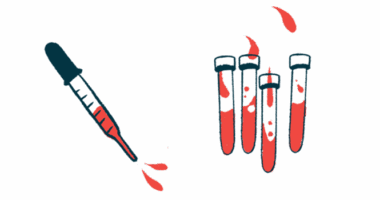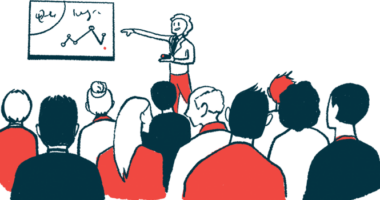
Adaptive clothing for Pompe disease: Dressing with comfort and ease
Last updated April 28, 2025, by Mary Chapman
Getting dressed isn’t always easy for people with Pompe disease, especially when muscle weakness and sore muscles can make everyday tasks more difficult.
Whether you’re helping a loved one or dressing yourself, adaptive clothing for Pompe disease can take some of the frustration out of your daily routine. It’s designed to work with your body, not against it, reducing the effort it takes to get dressed and helping you feel more comfortable and independent.
How adaptive clothing helps people with Pompe disease
Clothing can present problems for those with certain medical conditions, including Pompe disease.
For example, traditional clothing is not always designed in a way that is easily accessible or comfortable. Garments may be tight or restrictive, and they may have buttons, zippers, or other small fasteners that are difficult to manage due to weak fine motor skills.
They may also hinder the use of gastrostomy tubes or other medical devices — a common complaint among caregivers of children with infantile-onset Pompe disease.
People living with Pompe disease may also experience:
- limited mobility and muscle stiffness, which can make putting on clothes more difficult
- prominent shoulder blade protrusion, which can restrict arm mobility
- weakness in the chest and diaphragm muscles, which can cause fatigue when dressing
- altered posture from scoliosis, which can complicate arm movement and garment fit
- fatigue from delayed-onset muscle soreness, which can decrease the stamina needed for multistep tasks such as shoe tying.
Clothing made for people with limited mobility and other common Pompe symptoms can reduce some of these challenges, making dressing and undressing easier, or at least less frustrating, for the person with Pompe as well as their caregiver.
Easy dressing solutions for muscle weakness or other symptoms can also support your doctors during procedures and examinations, as well as your physical therapist during physical therapy sessions.
What to look for in adaptive clothing
When choosing adaptive clothing, comfort, ease of use, and accessibility should be top priorities. The right features can help reduce physical strain, accommodate medical needs, and support daily mobility.
Helpful design elements to look for include:
- zippers with pull tabs, large buttons, Velcro, or magnetic closures for easy dressing and quick access to feeding tubes or treatment ports
- lightweight, soft, and breathable fabrics to reduce skin irritation
- stretchy materials that are easy to move in and improve range of motion
- loose-fitting styles that aren’t overly baggy and can fit over accessibility devices
- shorter-backed pants and tops to avoid potential hazards from loose fabric near wheelchair wheels
- machine-washable fabrics that can endure frequent washings for hygiene maintenance
- shoes that allow the wearer to step into them without forcing them on
- shirts with wide arm openings or relaxed necklines for easier on-and-off dressing.
Clothing suggestions for everyday wear
When shopping for everyday clothing for someone with Pompe, look for styles that accommodate mobility challenges, medical devices, and sensory sensitivities. A few practical picks include:
- side-open or open-back shirts and tops with wrap-around, snap-button, or magnetic-closure styles for easy access
- bottoms with elastic waistbands, side-zip pants, or pants that are easily pulled on for easier dressing
- slip-on or Velcro shoes that provide extra support without the need for laces
- lightweight jackets with easy fastenings, front-zip sweatshirts, or cardigans that are easy to layer
- midi-length or wrap-style dresses that are simple to put on and adjust
- gripper socks with nonslip soles for added stability during movement.
Helpful dressing aids and tools
In addition to adaptive clothing, certain tools and dressing aids for Pompe disease can help make everyday routines more manageable.
- Button hooks and zipper pulls may make fastening easier.
- Dressing sticks and long-handle shoehorns may help reduce bending and straining.
- Adaptive gloves may enhance grip for those with weak grip strength.
- Sock and stocking aids may help simplify putting on lower garments.
- Reach-and-grab tools with claw mechanisms and extendable poles may help you retrieve shoes or clothing from the floor.
- Elastic shoelaces may eliminate the need for tying.
- Leg lifters may assist with adjusting pants or raising your legs into bed.
An occupational therapist can help you learn how to dress easily with Pompe disease by determining which adaptive tools will most benefit your individual needs.
Where to find adaptive clothing
Several specialized online retailers and brands offer comfortable clothing for neuromuscular disorders such as Pompe disease. Top offerings from the best adaptive clothing brands include:
- Adaptive at Seven7 Jeans
- Buck & Buck
- IZ Adaptive
- JCPenney Adaptive Clothing & Accessories
- Joe & Bella
- MagnaReady
- Ovidis Adaptive Wear
- Silverts
- Spoonie Threads
- Target Adaptive Clothing
- Tommy Hilfiger Adaptive
- Zappos Adaptive.
For those who require custom-tailored apparel, options include:
- Adaptations by Adrian, which creates garments for various needs for people with physical limitations
- Differently Enabled, which addresses individual needs
- Sewn Adaptive, which specializes in adaptive alterations.
There are also community resources as well as organizations that offer recommendations for adaptive clothing, such as:
- Disability Resources Agency for Independent Living
- Open Style Lab
- Runway of Dreams Foundation
- The Adaptive Clothing Resource Guide.
Finding the right clothing can make a big difference in daily life with Pompe disease. With the help of adaptive clothing and a few thoughtful tools, getting dressed can become more comfortable, less tiring, and a lot more manageable for people with Pompe disease and their caregivers.
Pompe Disease News is strictly a news and information website about the disease. It does not provide medical advice, diagnosis, or treatment. This content is not intended to be a substitute for professional medical advice, diagnosis, or treatment. Always seek the advice of your physician or other qualified health provider with any questions you may have regarding a medical condition. Never disregard professional medical advice or delay in seeking it because of something you have read on this website.




